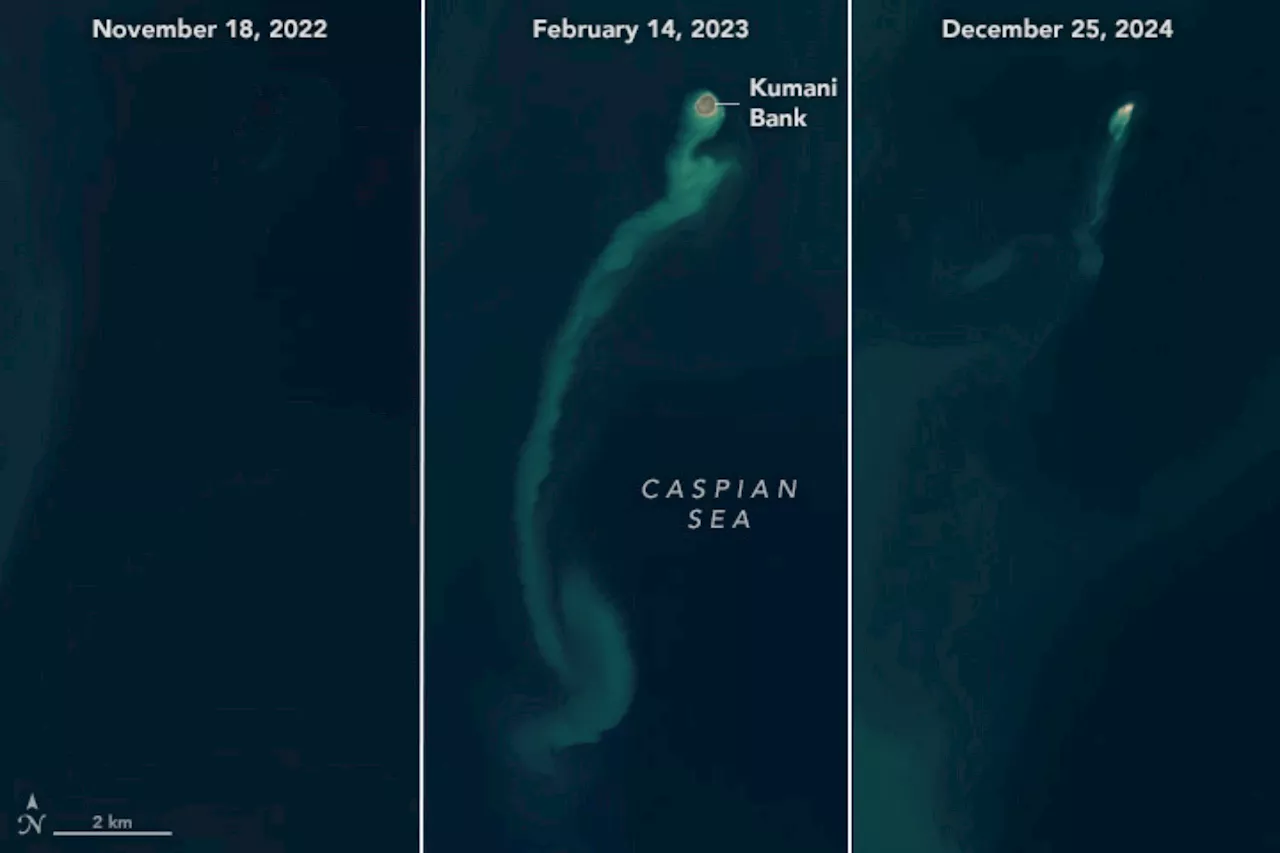NASA satellites have captured the formation and near-complete disappearance of a transient 'ghost island' in the Caspian Sea, created by the eruption of a mud volcano known as Kumani Bank. The images document the island's emergence in early 2023 and its significant reduction in size by the end of 2024.
NASA has released images of a vanishing 'ghost island' in the Caspian Sea captured by its satellites. The island, formed by the eruption of the Kumani Bank mud volcano , emerged in early 2023 and significantly reduced in size by the end of 2024. Mud volcanoes, though not fully understood, occur when subsurface layers of fluidized sediments, like silt and clay, are pressurized by tectonic activity . This pressurized sediment is pushed upward, erupting at the surface to create mounds of mud.
Kumani Bank, located roughly 15 miles off the eastern coast of Azerbaijan, is one such volcano. Its eruptions can present danger, sometimes expelling flammable gasses and even pillars of flame. NASA scientists believe these features may not be unique to Earth; some muddy mounds in the northern lowlands of Mars may have formed when gas- and liquid-rich sediments spewed out to the surface.A series of images from NASA's Landsat 8 and Landsat 9 satellites documented the island's appearance and disappearance. The leftmost image shows the volcano's crest below the surface. In the center image, captured in 2023, an island emerged with a sediment plume trailing away. In the final image taken December 25, 2024, a significantly reduced section of Kumani Bank was visible above the water. This is not the first time Kumani Bank has spawned such a feature. A similar event occurred in May 1861, creating an island that eroded by early 1862. The most powerful eruption occurred in 1950, forming an island 700 meters wide and 6 meters high. Azerbaijan stands out for its exceptionally high concentration of mud volcanoes, situated where the Arabian and Eurasian tectonic plates collide.University of Adelaide geologist Mark Tingay, at a seminar for the Geological Society of Australia, described mud volcanoes as 'weird and wonderful features that remain largely understudied and little understood.' Stanford University Professor Eric Dunham added, 'Volcanoes are complicated, and there is currently no universally applicable means of predicting eruption.
NASA Caspian Sea Mud Volcano Kumani Bank Ghost Island Transient Island Tectonic Activity Eruption Azerbaijan
United States Latest News, United States Headlines
Similar News:You can also read news stories similar to this one that we have collected from other news sources.
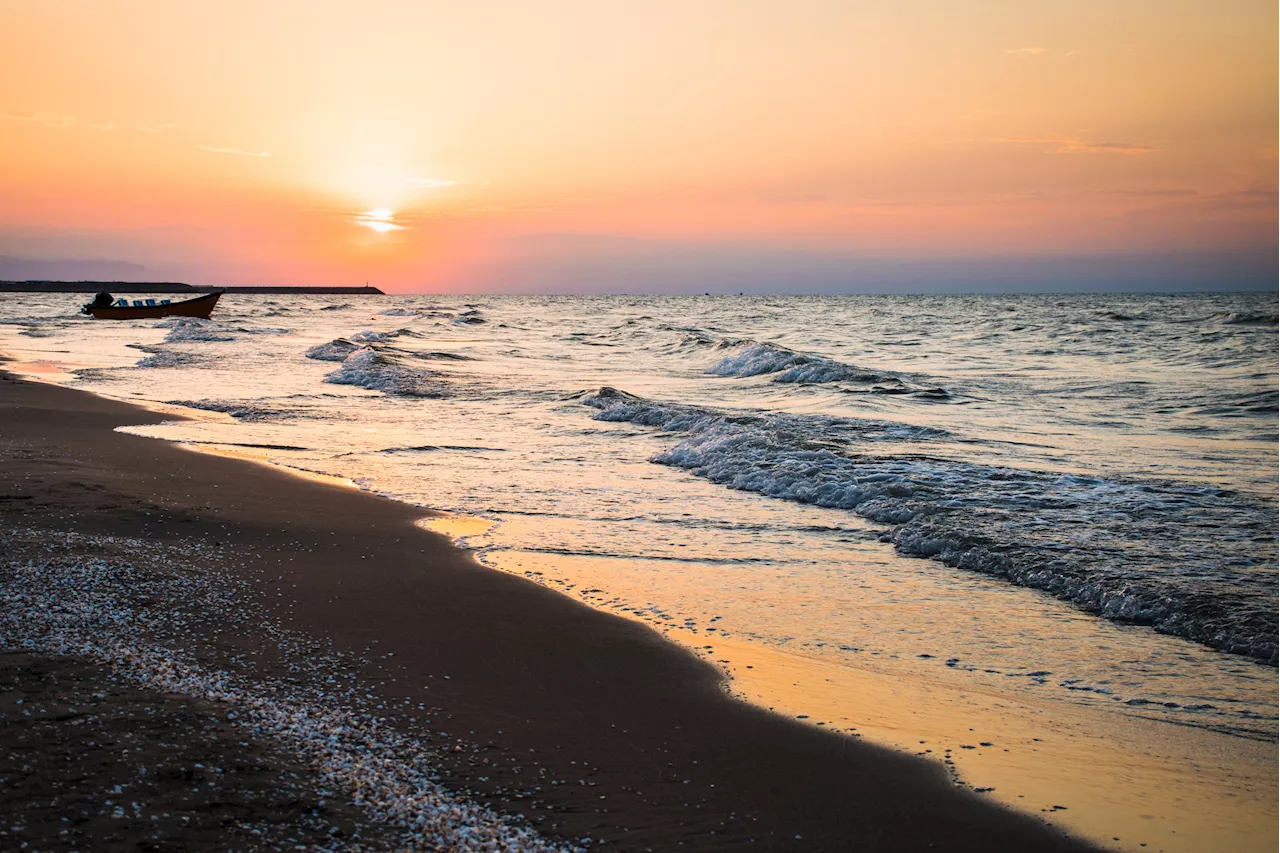 Ancient Shipwreck Unearthed by Caspian Sea Rising TideA 90-foot-long shipwreck has been discovered on the southern coast of the Caspian Sea in Iran. The vessel, likely a three-masted ship with a double hull, was unearthed by rising sea levels which eroded a sand dune covering it.
Ancient Shipwreck Unearthed by Caspian Sea Rising TideA 90-foot-long shipwreck has been discovered on the southern coast of the Caspian Sea in Iran. The vessel, likely a three-masted ship with a double hull, was unearthed by rising sea levels which eroded a sand dune covering it.
Read more »
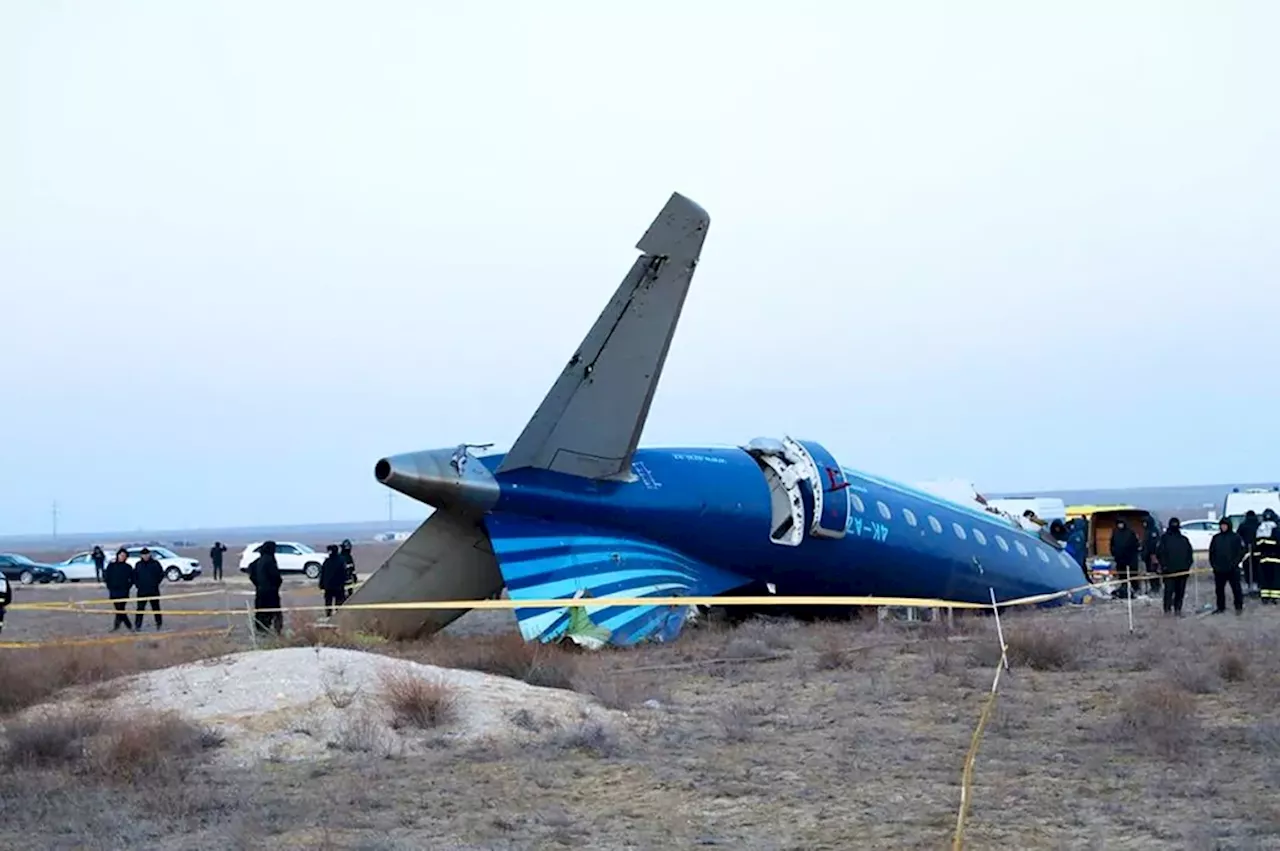 Putin Apologizes to Azerbaijan After Plane Crash in Caspian SeaRussian President Vladimir Putin apologized to Azerbaijani President Ilham Aliyev for the plane crash that occurred in Russian airspace. The crash, which occurred while the plane was flying from Baku to Grozny, left 29 survivors. Investigations are ongoing, with allegations suggesting the plane may have been shot down by Russian air defenses attempting to intercept a Ukrainian drone near Grozny.
Putin Apologizes to Azerbaijan After Plane Crash in Caspian SeaRussian President Vladimir Putin apologized to Azerbaijani President Ilham Aliyev for the plane crash that occurred in Russian airspace. The crash, which occurred while the plane was flying from Baku to Grozny, left 29 survivors. Investigations are ongoing, with allegations suggesting the plane may have been shot down by Russian air defenses attempting to intercept a Ukrainian drone near Grozny.
Read more »
 Ancient Shipwreck Reveals Russian Trade Secrets in Caspian SeaAn 18th-century shipwreck discovered off the coast of Iran sheds light on the vibrant maritime trade that once flourished in the Caspian Sea, particularly under Russian influence.
Ancient Shipwreck Reveals Russian Trade Secrets in Caspian SeaAn 18th-century shipwreck discovered off the coast of Iran sheds light on the vibrant maritime trade that once flourished in the Caspian Sea, particularly under Russian influence.
Read more »
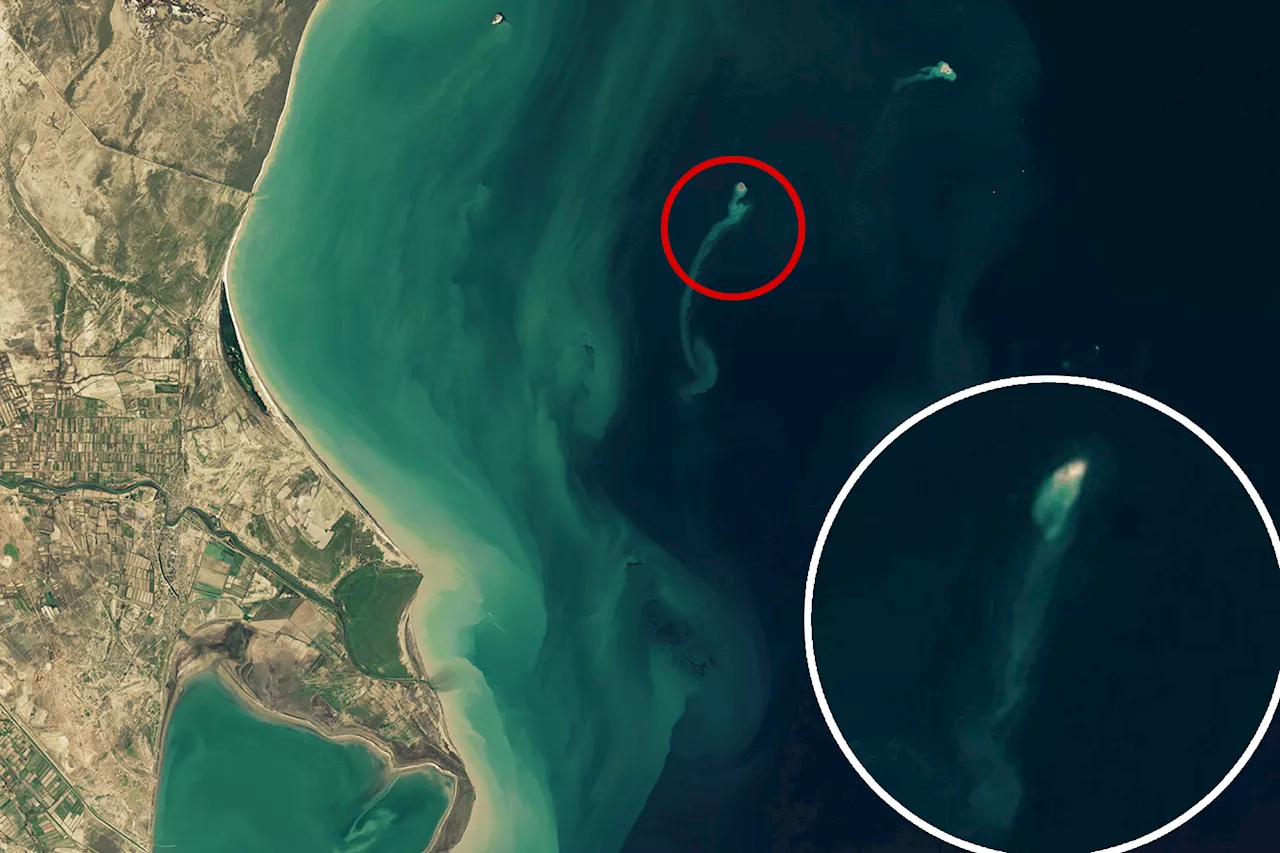 Ghost Island Emerges and Disappears in Caspian SeaScientists were amazed by the appearance of a mysterious 'ghost island' in the Caspian Sea, formed by the eruption of the Kumani Bank mud volcano. The island, captured by NASA satellites, rose from the seafloor and eroded away within a year. This phenomenon is not unique, with similar transient islands appearing after past eruptions of the Kumani Bank mud volcano.
Ghost Island Emerges and Disappears in Caspian SeaScientists were amazed by the appearance of a mysterious 'ghost island' in the Caspian Sea, formed by the eruption of the Kumani Bank mud volcano. The island, captured by NASA satellites, rose from the seafloor and eroded away within a year. This phenomenon is not unique, with similar transient islands appearing after past eruptions of the Kumani Bank mud volcano.
Read more »
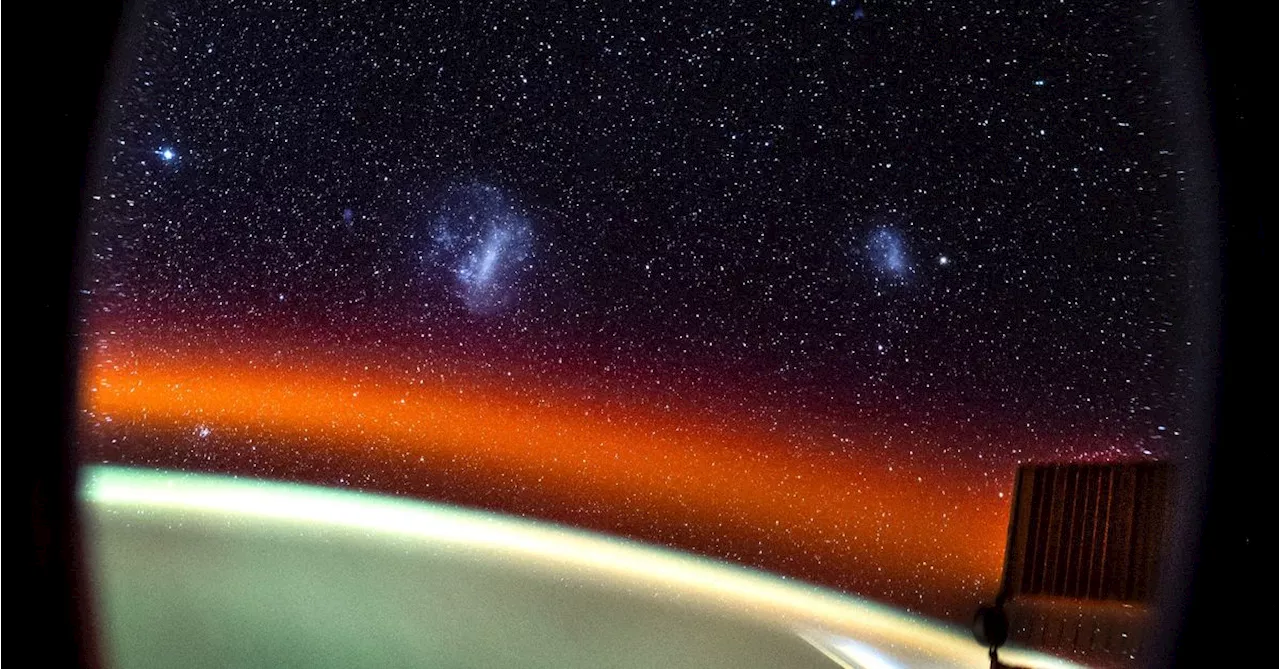 NASA Astronaut Captures Stunning Star Photos Using Homemade DeviceNASA astronaut Don Pettit overcame the challenges of photographing stars from the International Space Station by creating his own star tracker. This device allowed him to capture long-exposure photos with sharp stars, showcasing the beauty of the night sky from orbit.
NASA Astronaut Captures Stunning Star Photos Using Homemade DeviceNASA astronaut Don Pettit overcame the challenges of photographing stars from the International Space Station by creating his own star tracker. This device allowed him to capture long-exposure photos with sharp stars, showcasing the beauty of the night sky from orbit.
Read more »
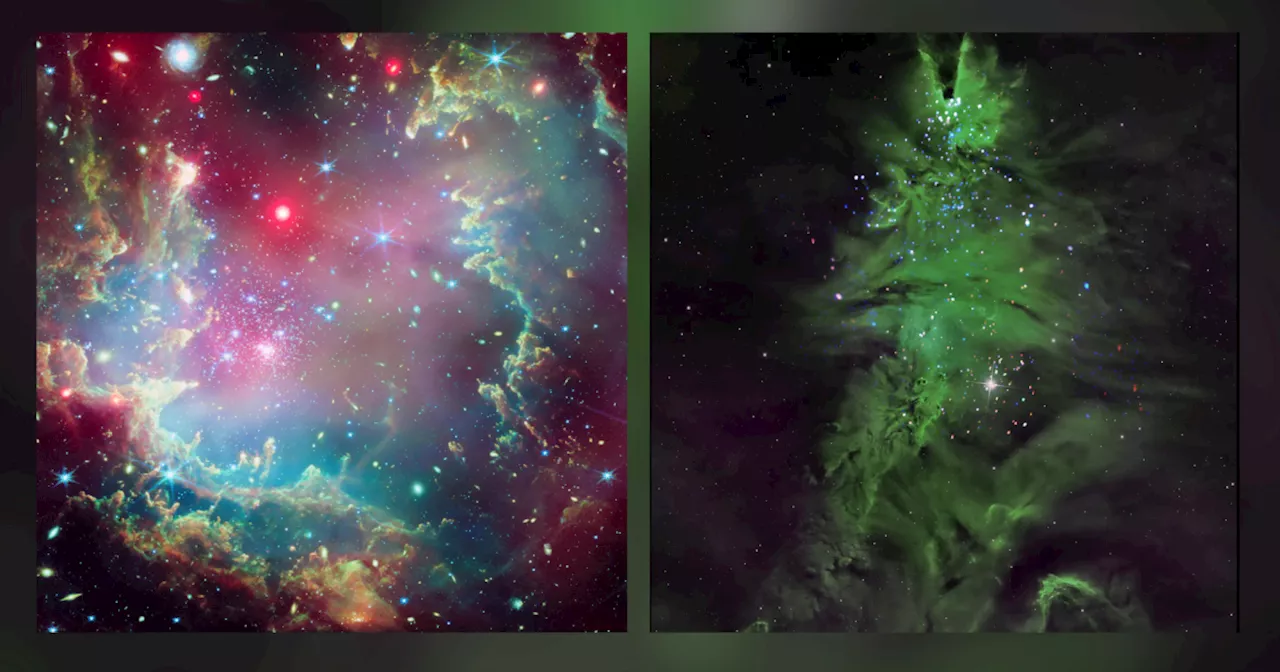 NASA Captures Festive Star Clusters Resembling Wreath and Christmas TreeNASA has released stunning images captured by the Chandra X-ray Observatory and the James Webb Space Telescope, revealing two star clusters with a distinctly holiday theme. NGC 602, nicknamed the 'wreath cluster,' is located approximately 200,000 light-years away in the Small Magellanic Cloud, while NGC 2264, the 'Christmas tree cluster,' is composed of young stars.
NASA Captures Festive Star Clusters Resembling Wreath and Christmas TreeNASA has released stunning images captured by the Chandra X-ray Observatory and the James Webb Space Telescope, revealing two star clusters with a distinctly holiday theme. NGC 602, nicknamed the 'wreath cluster,' is located approximately 200,000 light-years away in the Small Magellanic Cloud, while NGC 2264, the 'Christmas tree cluster,' is composed of young stars.
Read more »
